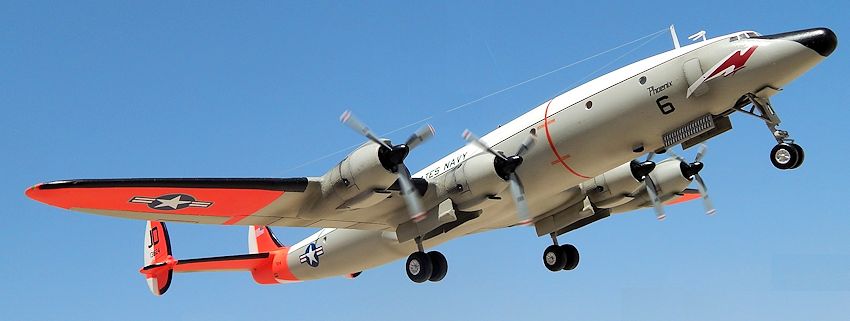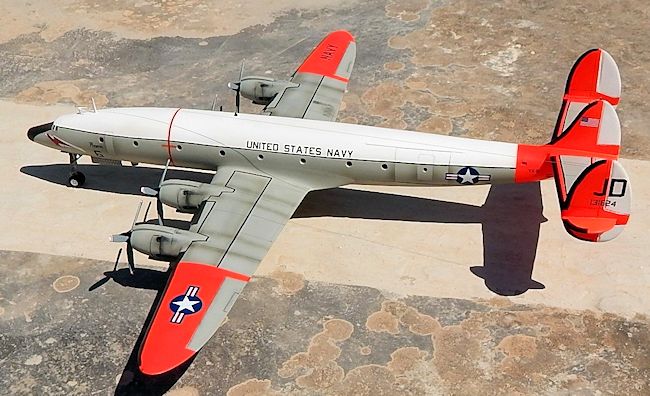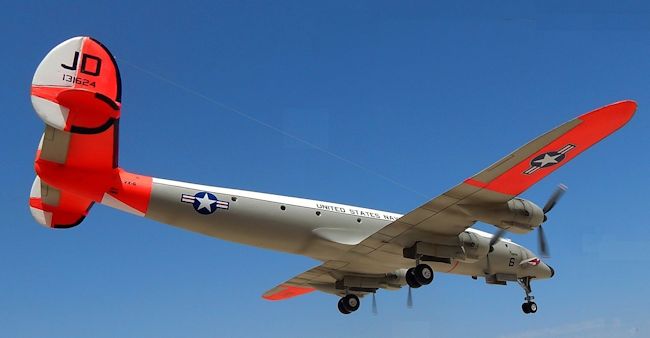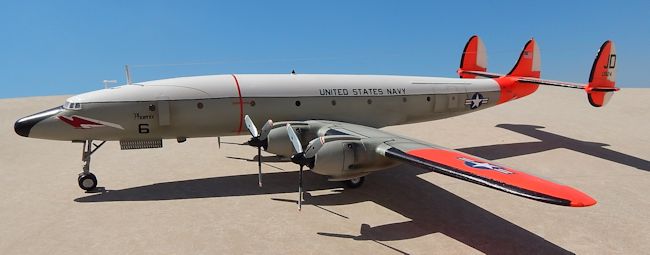
Heller 1/72 C-121J Constellation
| KIT #: | 311 |
| PRICE: | 18 Euro |
| DECALS: | one option |
| REVIEWER: | Carmel J. Attard |
| NOTES: | Max decals |

| HISTORY |
As the success of the
Constellation became apparent a number of different versions to suite
requirements of the airlines were designed. The civil transport version was the
‘H’ model. This was a combination
of freight and passenger aircraft that could be quickly converted from one role
to the other, or be used in part freight and part passenger service. A total of
53 were built most going to U.S. domestic airlines.
The US Navy used the Super
Constellation for personnel transport and freight purposes as designated R7V-1
(later C-131J). The order was for 65 aircraft but only 50 were delivered as the
others went to the USAF and one became a VC-121E Presidential machine and four
were converted to turboprop power as R7V-2s.
 The Navy Lockheed
C-121J/R7V-1 Constellations were used by VX-6/ VXE-6 for transport between
Christchurch and Mc Murdo station for various mapping and sampling projects
between 1958 and 1971. One of the
C-121Js called Pegasus Bu No 131644 arrived in 1964 and crashed during the
1970-71 season while carrying 80 passengers and crew, none of whom were
seriously hurt. The crash occurred on the 6th landing attempt after
the weather had closed in at Mc Murdo Sound Antarctica beyond the point of no
return on a flight from New Zealand.
The Navy Lockheed
C-121J/R7V-1 Constellations were used by VX-6/ VXE-6 for transport between
Christchurch and Mc Murdo station for various mapping and sampling projects
between 1958 and 1971. One of the
C-121Js called Pegasus Bu No 131644 arrived in 1964 and crashed during the
1970-71 season while carrying 80 passengers and crew, none of whom were
seriously hurt. The crash occurred on the 6th landing attempt after
the weather had closed in at Mc Murdo Sound Antarctica beyond the point of no
return on a flight from New Zealand.
This aircraft was 1 in 856 and powered by 4
18-cylinder radial Wright R-3350 engines and distinguished by a triple-tail
design and dolphin-shaped fuselage. This type of plane was the presidential
aircraft for U.S. President Dwight D. Eisenhower.
The ice landing strip was then named Pegasus
White Ice Runway, and the landing field, Pegasus Field, in honour of the
aircraft. The Pegasus remains there to this day, buried beneath snow and
residing alone in this Antarctic Sound. The Lockheed Constellation does get many
visitors for a plane in the Antarctic and often gets parts of it dug out for
pictures. There are photographs that display the flying orange Pegasus that is
detailed on the side of the aircraft.
The wrecked
Pegasus Lockheed Constellation is located and viewed with these coordinates;
-77.966442,166.428258. Oddly,
some folks at the various research stations there insist that the ghosts of
those who have died in Antarctica congregate there at times for unknown reasons.
Who knows?
 Phoenix was the other C-121J/R7V-IP, which
carried thousands of passengers between New Zealand and Antarctica. This
aircraft was fitted with a trap to catch live microorganisms in the polar skies.
The aircraft returned in 1971 and was sent to Davis Monthan and later scrapped.
A third Constellation Project Magnet’s El Paisano was wrecked at Mc Murdo during
a trans-polar freight earlier in 1960.
Phoenix was the other C-121J/R7V-IP, which
carried thousands of passengers between New Zealand and Antarctica. This
aircraft was fitted with a trap to catch live microorganisms in the polar skies.
The aircraft returned in 1971 and was sent to Davis Monthan and later scrapped.
A third Constellation Project Magnet’s El Paisano was wrecked at Mc Murdo during
a trans-polar freight earlier in 1960.
Pegasus wreck remains the sole survivor of the three. The extreme cold, combined with regular snow covering acts as an efficient material preservative on these aircraft that had been abandoned over the years. Pegasus has lain at Williams Field since 1970, periodically appearing and disappearing with the shifting snow. An initiative to ‘clean up the ice’ could result that at least Pegasus will leave Antarctica for preservation in a museum.
| THE KIT |
| CONSTRUCTION |

| COLORS & MARKINGS |
 missions. This was then gull grey as regards to Phoenix 6.
The original day-glow trimming on wing tips and tail units was later altered to
international orange while the rudders appeared to be silver at one time and
white during later operational life.
missions. This was then gull grey as regards to Phoenix 6.
The original day-glow trimming on wing tips and tail units was later altered to
international orange while the rudders appeared to be silver at one time and
white during later operational life.
I have used Model Master enamel paint for all
colours but the fluorescent red. For that I used
Revell's paint. As for decal
decorations I have used ‘Maxdecals’ double sheet MAX 7211 Antarctic Hercules
(part 3 of Antarctic Aviation Series).
This included a bonus decal for the Lockheed C-121J as operated
by VXE-6 circa 1971. I have
slightly deviated from the decal instructions and painted my model with a slight
difference after reference to photos. The decals adhered very well and are of
excellent quality.
| CONCLUSIONS |

September 2014
Thanks to If you would like your product reviewed fairly and fairly quickly, please contact the editor or see other details in the Note to Contributors.